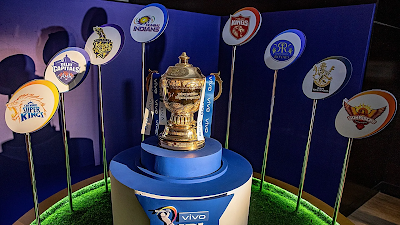We might have probably come across the word “auction” at least once in our life, haven't we? Well, for most of the time, the word “auction” is related to the process of goods or services being bought through bids and giving them away to the person with the highest bid among the rest. But the IPL auction is an event that is always on the radar of cricket fans across the country. But why is it like that? Let’s find out.
Source - GQ India
Stages of Preparation
Cricketers from India and various parts of the world register themselves for the auction along with setting up an individual base price at which each player can be bought. The base price is usually a minimal number at which the player will be bought by the competing franchises in the auction.
The auction consists of the respective franchise teams of the IPL being the contenders, whereas the players are in contention. The IPL Governing Council, on the other hand, based on the feedback from the respective franchises, will play a role in selecting or finalizing the players eligible for the auction. The players can only be bought by the franchises through a fixed budget allocation in the form of “funds.” The auction process will officially be initiated by a professional auctioneer. Richard Madley was the longest-standing auctioneer for the IPL auction from 2008 to 2018.
Process of Bidding
Representatives of the franchise would be present in the auction process with their designated paddles, which contain the team’s, or in simple terms, the franchise’s, logo. If any one of the representatives of the respective franchises wishes to make a bid or to raise the current bid, they can lift up their respective paddles in order to make themselves sound clear to the auctioneer and to the rest of the participants.
The auction would then begin with the bidding process through the respective player’s base price. This type of an auction is quite commonly applied across various fields, from art to real estate. As of 2025, Rishabh Pant has become the most expensive player in the current auction bought by Lucknow SuperGiants at a bidding price of 27 crores followed by Shreyas Iyer and Venkatesh Iyer at the bidding prices of 26.75 crores and 23.75 crores bought by the respective franchises Punjab Kings and Kolkata Knight Riders.
One of the most surprising moments of the auction was Royal Challengers Bangalore not using RTM card to retain Mohammad Siraj who was later on acquired by Gujarat Titans with a significant bid of 12.25 crores. The auction had even witnessed the demand for emerging performers and proven stars through young talents such as Angkrish Raghuvanshi and Vaibhav Arora with their respective bidding prices of 3 crore and 1.8 crore bought by Kolkata Knight Riders.
Usage of Special Rules
Now wouldn't a process like this involve some rules and regulations to keep everything in check before letting all things loose or going overboard? Of course it does! One of the biggest benefits for the franchises involved in the auction would be the Right to Match (RTM) card. It helps the franchises to retain the players that they have previously released during the auction by matching the highest bid for that respective player. This technique has been utilized many times by various teams in order to retain their star players in the auction. F
or example, Rashid Khan, being a star bowler for SRH (Sunrisers Hyderabad), has been retained by the franchise through the RTM card during the 2018 auction. This was done by the franchise to ensure that there are no weak spots in their bowling lineup for the season. If, in case, no player is bought by any franchise during the auction, they will remain unsold, but a benefit for the unsold players is that they can be reintroduced into the auction upon the interests of the respective franchises.
But let us say we want to have a lineup of 18 players or 25 players who are either only from overseas or are Indian; can it be possible? As good as this sounds, unfortunately it doesn't work that way. As per the squad size limit of the IPL auction, a franchise can have a minimum of 18 players or a maximum of 25 players, where a maximum number of only 8 overseas players are allowed. In order to ensure economic uniformity, the respective teams must operate only within their set allocated budgets.
A Game of Strategy
Strategy is the main weapon that can come in handy during the auction. Mainly because your chances of winning the IPL season reduce to 50 percent upon winning your chances in the game of strategy during the auction. The teams will have to use various strategic techniques based on player availability and the respective team needs in order to tackle the rival team strategies involved during the auction. At times, all-rounders and bowlers who are specialized in bowling well during the death overs, such as Bhuvaneshwar Kumar, are prioritized during the auction. Meanwhile the teams can also go for young, uncapped talent who might have immense potential to display in the field and who can significantly improve the winning chances of the team for the given season.
Written By Shashank
This article has been authored exclusively by the writer and is being presented on Eat My News, which serves as a platform for the community to voice their perspectives. As an entity, Eat My News cannot be held liable for the content or its accuracy. The views expressed in this article solely pertain to the author or writer. For further queries about the article or its content you can contact on this email address - shashanksmithamanya@gmail.com




.jpeg)







0 Comments